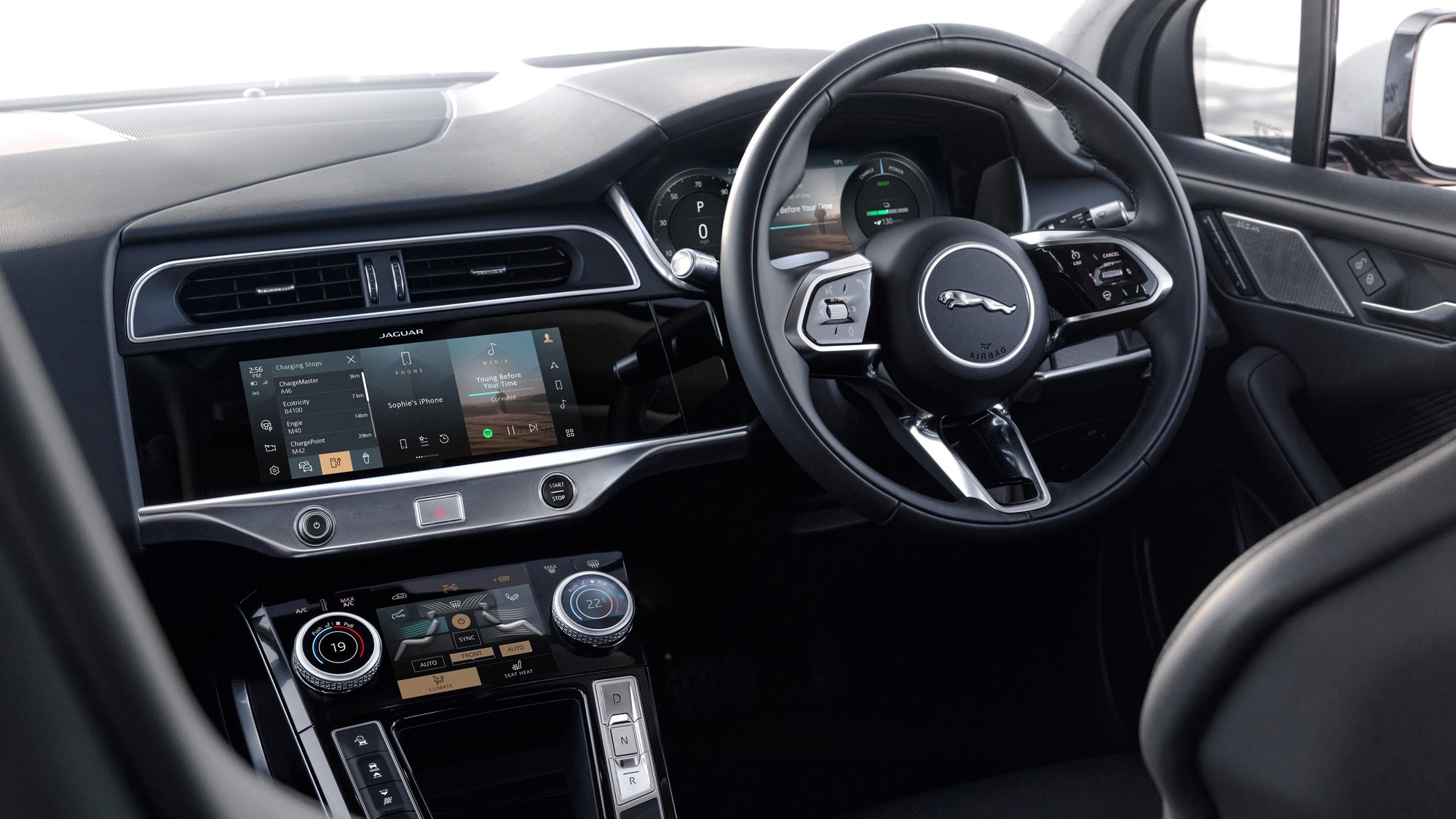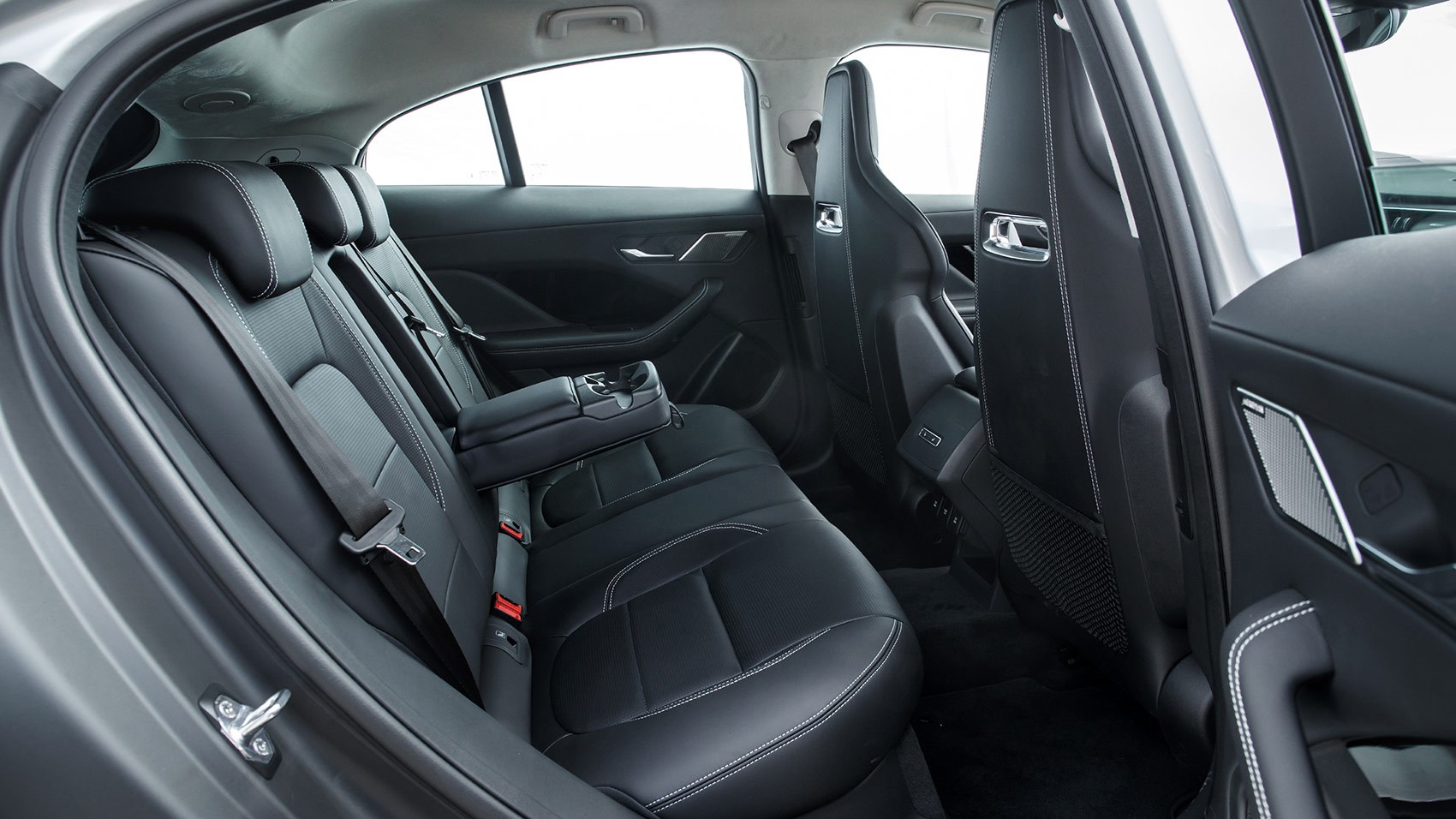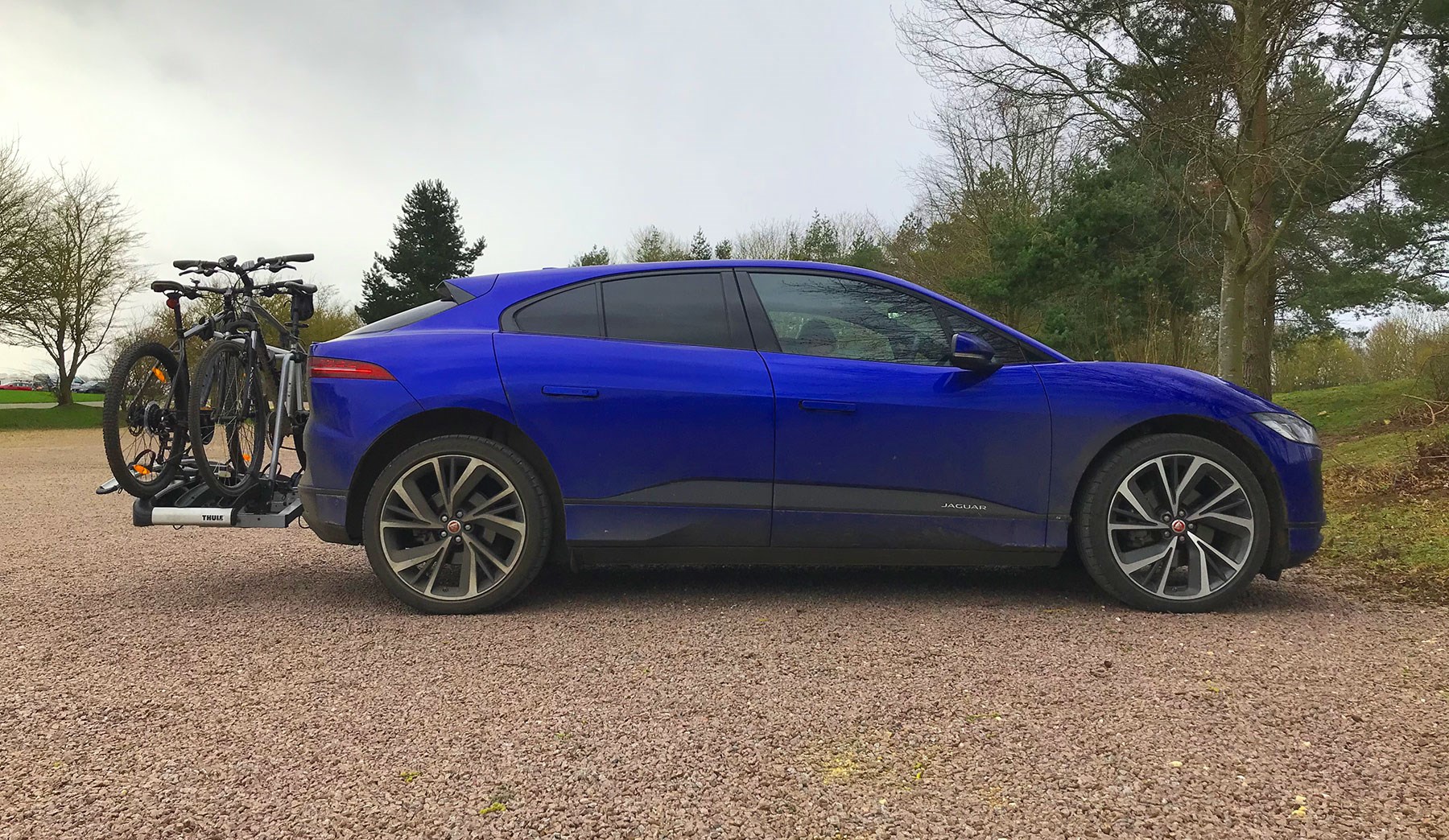► Electric Jaguar i-Pace driven
► We test – and live with – Jag’s EV
► Full review and long-term test
Tesla got there first, but Jaguar was the first mainstream manufacturer to launch a full-size premium electric car back in 2017 with the groundbreaking i-Pace. It’s hard to believe that’s almost a full five years ago.
Not quite as radical in 2022, the Jaguar i-Pace is now beset with competition on all sides, from the cheap and clever Kia EV6 from Korea to the Tesla Model Y from the States. To find out just how good the Big Cat holds up against its newer rivals, and just how good Jag’s first EV is overall, we gave the keys to CAR magazine’s editor-in-chief Phil McNamara for 13,000 miles. Here you’ll find our full Jaguar i-Pace review, complete with all the learnings from having lived with one for nearly a year.
You’ll struggle to find a more detailed i-Pace buyers’ guide!

The Jag i-Pace is a bespoke electric car, with no petrol or diesel equivalent, and is all the better for it. The platform is standalone and that means that the designers could harness the potential of its battery architecture, with more space for bodies and baggage, a novel, appealing shape – and some clever materials to save weight.
Construction is quite exotic, in a bid to counter the hefty weight of those batteries: 94% of the materials are aluminium, and the i-Pace uses double-wishbone front and Integral Link rear suspension that are familiar from the also-aluminium XE, XF and F-Pace saloons and SUVs. The i-Pace is claimed to be Jaguar’s most torsionally rigid structure at 36kn per degree, and has 50:50 weight distribution. On paper, it bodes well for the ride and handling we’ve come to expect of a Jag.
Twin synchronous permanent magnet electric motors provide power, with one at each axle for permanent all-wheel drive giving strong traction no matter the weather outside. The transmission is a single-speed epicyclic unit. A large-capacity 90kWh lithium-ion battery containing 432 pouch cells sits between the front and rear wheels – and the battery gets an eight-year warranty. If you own an i-Pace, you’ll have to take it for a service every two years or 21,000 miles.
Jaguar i-Pace updates in 2021: faster charging, better infotainment lead upgrades

Jaguar claims outputs of 395bhp and 513lb ft, enough for 0-62mph in just 4.8sec – and it feels just as fast in real-world driving. There’s a silent, slingshotting slug of acceleration available at most speeds as the twin motors spool up instantly to give a proper wallop of thrust.
Of course, drive like that too much and you’ll deplete the batteries quickly, but performance is so well judged in the i-Pace that you can tap into the acceleration as and when you need to. Most of the time in day-to-day driving, you merely back off and waft along. The i-Pace is very good at this; it is a supremely relaxing, refined car to drive around town and on longer journeys.
Jaguar claims a range of 298 miles, and charge times from 0-80% in 40 minutes at a rapid 100kW DC public charger, with AC wallbox charging (7kW, the kind of thing you’d do at home) taking 10 hours. In effect, you plug in when you get home at the end of the day and the i-Pace will be ready and charged up when you wake up in the morning.
When we lived with a Jaguar i-Pace, we tried smart charging to replenish the battery during low-tariff electricity hours, while pre-conditioning allows you to cool or heat the car while it’s still on charge, saving battery charge – and preventing frozen windows in winter.


What’s the interior like?
Open the i-Pace’s door and the Jaguar leaper dances on the central digital screen, while the digital instrument binnacle announces its fully charged range. There’s a twin-touchscreen system like the one first seen in the Range Rover Velar. The upper screen is for infotainment functions including sat-nav, music and telephone; the lower screen controls climate functions and incorporates rotary dials for tactile feedback. Mostly, it’s quick and intuitive and works very well.
The driving position is a little higher than you perhaps expect – there’s a big battery beneath the floor, remember – but the seats are good. Either comfort-focused standard chairs, or sexier-looking F-type seats that are firmer on your lower back, but cup your body more securely.
There’s ample space in the rear seats (below). Our taller 6ft+ drivers found a good inch of kneeroom and headroom in the back seats if they nipped back there with the driver’s seat set for them. This is a roomy car – the i-Pace might be 50mm shorter than Jag’s F-Pace SUV, but there’s 130mm more wheelbase at almost three metres long, and the front occupants sit well forward, freeing up space in the rear.
Is the Jaguar i-Pace practical? There’s a tiny froot (front boot), and a long if not particularly deep rear boot with 656 litres of luggage capacity. You get two sets of charging cables – a three-pin charger, and a Type 2 cable for rapid charging when out and about. Both sit in the front compartment easily enough.

How does the Jaguar i-Pace feel on the road?
The dual-motor i-Pace launches like a cannonball, steers with a ballerina’s deftness, and grips like Loctite – thank to those low-set battery cells between the wheels. Everyone who took a turn of our long-termer was smitten by the way it drives.
This is a heavy car at 2.2 tonnes, but it doesn’t feel it, partly because such a large portion of the weight is mounted low down. The steering is quick and accurate, the body nicely controlled, and there’s both high grip when you carve into a corner off-throttle, and huge traction when all 513lb ft pings you out, with just the occasional sense of the front tyres scrabbling to deliver the frantic forward momentum.
In Comfort mode, there’s a kind of synthesised jet-engine whine that rises in line with the speed and it’s even louder in Dynamic mode; it’s alien and odd but does add a sense of drama that’s in proportion to the speed, risk and excitement playing out through the windscreen.
And what about Dynamic mode?
Dynamic mode is accessed through a slightly fiddly interface. In this configuration, the Jaguar is comically quick – it just lunges away on a hit of instant torque, leaving other traffic as specks in the distance, and continues to accelerate up to an invisible wall of air at an indicated 130mph. With a passenger on-board and an empty mountain road ahead, the limitation becomes how sympathetic you’re feeling to your co-pilot’s stomach rather than how capable the i-Pace is – the speed, lateral g and traction can be stomach-churning if you exploit it all.

Keeper of our long-term i-Pace, Phil McNamara, wanted more aggressive regenerative deceleration to dovetail with his late-braking style, but the way the Jag turned in was always a source of enjoyment. On a longer cross-country trip, the i-Pace launched past dawdling cars on Salisbury Plain and scythed through A303 roundabouts with unrelenting front-end grip.
The speed is backed up by refinement when you need it. On the motorway, tyre and wind noise are impressively low, even at quite high cruising speeds.
Charging and running costs
Conversation topic #1 when you own a Jaguar i-Pace is ‘How far does it go?’ – range and charging anxiety are uppermost in the human psyche. The i-Pace is officially rated at between 258 and 292 miles of range, depending on spec. But fully charged, our luxuriously equipped long-termer never displayed a range north of 225 miles.
Its longest stint in one go between charges was 191 miles to deepest Cornwall using Eco mode. We never pushed our luck further.

A home charger is a must-have if you take the plunge and go electric. We installed a 7kW BP Chargemaster unit (above) which cost us £449, thanks to a £500 government subsidy. Just note that these grants have now been reduced to £350.
On a cheap overnight tariff, an i-Pace charge totalled £8, so about £20 for 500 miles. A punchy twin-turbodiesel F-Pace, though still down 100bhp and a couple of seconds to 62mph on the electric Jag, would need around £78 to gas for 500 miles. And there is an undoubted feelgood factor from emitting zero pollutants on the go.
It’s that ability to thrill – while driving on saintly zero emissions – that is the Jaguar i-Pace’s crowning glory. It’s a sublime skillset, and when combined with the Jag’s innate style and excellent dynamics, we found it irresistible.
The full verdict
In 2022, the Jaguar i-Pace still represents a huge achievement, from its avantgarde design and cutting-edge engineering to its rewarding dynamics and high levels of interior refinement and space. After living with one for eight months, we can give an even more detailed judgment.

In its time with us, the i-Pace did all it was asked: a deep boot stowed pram, scooters or luggage, the rear seats folded not-quite-flat but still handled recycling runs. We even towed with it, using the built-in retractable towbar to carry a bike rack. And with its instant performance, calm, vast cabin space and low running costs, it was a great electric car. Or just a brilliant car full stop.
The EV lifestyle it forces is not for the inflexible, disorganised, or shy. But after half a year, our editor-in-chief would’ve had another EV.